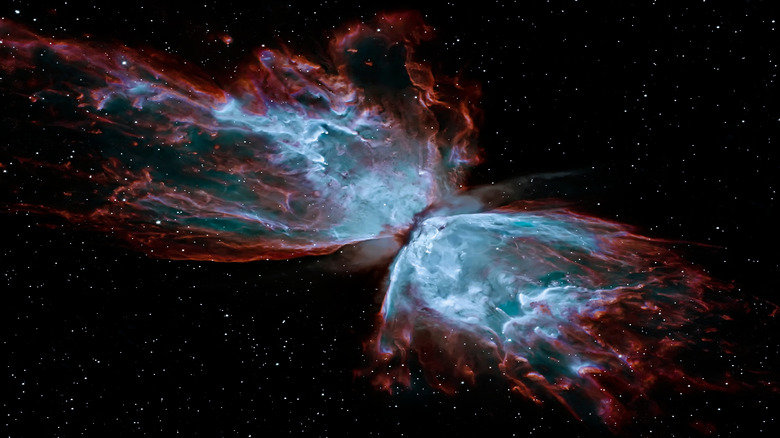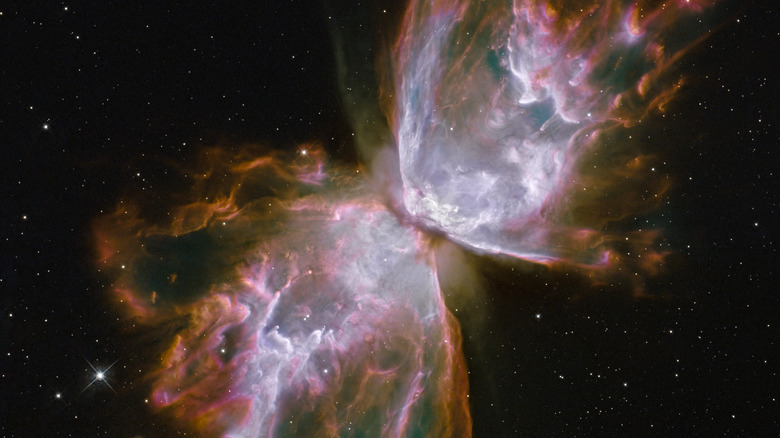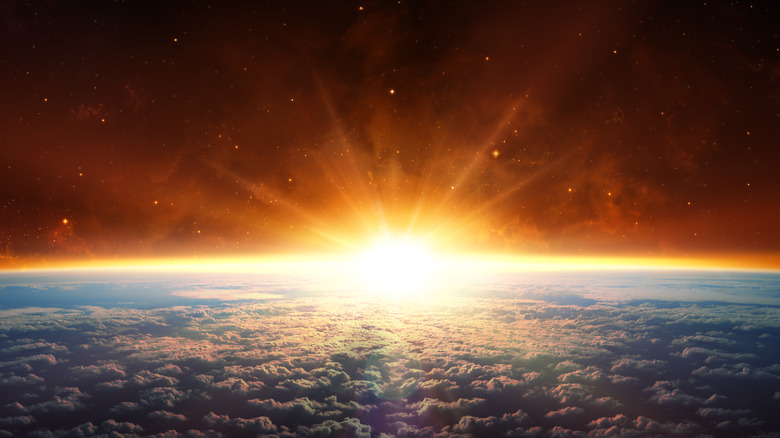What We Can Learn About Our Sun From The Butterfly Nebula
Outer space has been a wonder among humans for centuries. While our ability to understand the universe has increased with the help of technological advances and new perspectives, space remains a vast mystery. A few of these mysteries have been the subject of extensive research among astronomers. One of which is nestled around 4,000 lightyears away from Earth in the Scorpius constellation known as NGC 6302, or the Butterfly Nebula (per NASA).
The Butterfly Nebula is unique because, as most nebulae form large, circular shapes, this celestial butterfly has an impressive wingspan of over three lightyears, according to Live Science. Nebulae such as the Butterfly Nebula are the product of a dying star. As the star runs out of fuel, it propels its outer layers outward into space in a chaotic fashion, forming, in this case, the nebula's wings (via the University of Washington). Astronomers have spent years studying this massive, formidable beauty, and there's much to learn from the Butterfly Nebula.
Winds in the Butterfly Nebula have been swirling for thousands of years
The Butterfly Nebula is an astounding visual representation of what happens when stars, much like our sun, die out. At the American Astronomical Society meeting in Seattle, images of the nebula were compared. The first image was taken in 2009 by the Hubble Space Telescope. The second was taken in 2020. The comparison allowed astronomers to find evidence of harsh winds blowing in all directions coming from the center of the nebula, according to Live Science.
The winds appear to have been gusting anywhere from 900 to 2300 years at around 500 miles per second. The central star of the Butterfly Nebula continues to push its own matter out into the wind gusts. Over time, the nebula's wings have grown larger without changing their signature shape (via the University of Washington). The intense, dusty chaos surrounding the nebula shields the bright central star from view. However, it still burns hot at around 250,000 degrees Celsius (per NASA). The nebula's existence reminds us of what will happen when our sun runs out of fuel and ultimately dies.
The Butterfly Nebula showcases the future of Earth's Sun
With its uniquely beautiful likeness to one of nature's most pleasant insects, the Butterfly Nebula is a cosmic treasure. However, the mystery of its shape has researchers scratching their heads. According to Live Science, one hypothesis is that the nebula could have had a run-in with another star at one point. This would have allowed NGC 6302 the opportunity to consume some of the gases from the other star during the collision. The result is a magnetic field in the immense field of debris already surrounding the nebula, causing the wings of the Butterfly Nebula to take their shape.
The images taken of the Butterfly Nebula give researchers a glimpse into the destruction and creation, as the destruction and chaos of one star's death will be what creates new star systems in the future (via the University of Washington). Bruce Balick, the University of Washington professor and emeritus of astronomy, said of the Butterfly Nebula, "It's a creation story that is happening over and over again in our universe. The shaping processes provide key insight into the history and impacts of the stellar activity." One day our sun will erupt into breathtaking mayhem just as the star that erupted into the Butterfly Nebula did, and hopefully, a new system of stars will emerge.


